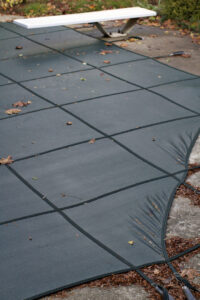
Taking the time to prepare your pool for the fall season ensures that it is clean and ready to be closed for the winter months.
As the summer sun fades and the cooler months of fall approach, it’s essential to start thinking about preparing your pool for the off-season. Proper pool maintenance during the fall can help protect your investment, prevent costly damage, and ensure that your pool is ready for use when warm weather returns. Here’s a step-by-step guide to preparing your pool for the fall season.
Clean the Pool Thoroughly
Start by giving your pool a deep clean. Use a skimmer net to remove debris, leaves, and dirt from the water. Pay close attention to the pool floor and walls, brushing off algae and other buildup. Cleaning your pool thoroughly at the start of the fall season helps prevent stains and makes the water easier to manage when it’s time to close the pool for winter.
Don’t forget to clean the pool filters, pumps, and skimmer baskets as well. Keeping these components clean ensures they function optimally and prevents them from becoming clogged with fall leaves and debris.
Balance the Water Chemistry
Proper water chemistry is crucial for keeping your pool in good condition during the fall. Test the water’s pH, alkalinity, and calcium hardness, and adjust the levels as needed. The ideal pH range is between 7.4 and 7.6, while alkalinity should be between 100 and 150 parts per million (ppm). Proper calcium hardness levels help to prevent corrosion and scale buildup, with a recommended range of 200 to 400 ppm.
Balancing the water chemistry not only keeps the water clear and safe but also protects the pool’s surfaces and equipment from damage caused by improper pH and chemical imbalances.
Shock the Pool
Shocking the pool involves adding a large dose of chlorine or other chemical sanitizers to kill bacteria, algae, and other contaminants. It’s an essential step before closing your pool or reducing its usage as the weather cools down. Shocking helps to maintain water quality and prevents algae growth during the fall season. Be sure to follow the manufacturer’s instructions for the appropriate amount of shock treatment based on your pool size.
After shocking, allow the pool filter to run for at least 24 hours to circulate the chemicals thoroughly. Retest the water and adjust the chlorine level if needed before moving on to the next steps.
Adjust Pool Equipment and Settings
As the temperatures drop, you’ll want to adjust your pool equipment and settings to reflect the reduced usage and cooler conditions. This includes reducing the run time of your pool pump and heater. Aim to run the pump for about 4 to 6 hours per day instead of the 8 to 12 hours typically recommended during the summer.
If your pool is equipped with a heater, lower the temperature setting or consider turning it off completely to save on energy costs. Be sure to also clean and inspect all equipment, such as the pump, filter, and heater, to ensure they’re in good working order before winter.
Do You Have More Questions About Swimming Pools? Ask Sunrise Premiere Pool Builders LLC
If you still have questions about how to build a brand new swimming pool, Sunrise Premiere Pool Builders LLC is here to help you. At Sunrise Pools, we can build and install your pool, spa, or hot tub and provide you with pool chemicals, services, and more. If you have questions, feel free to give us a call at 410-349-3852. To see more from us and for tips and tricks, be sure to follow us on Facebook, Twitter, Pinterest, and LinkedIn.
